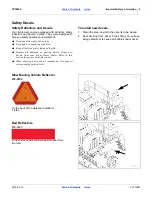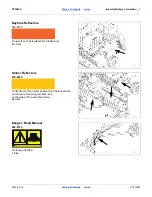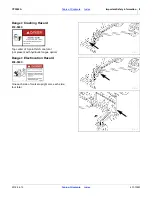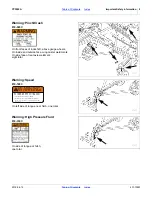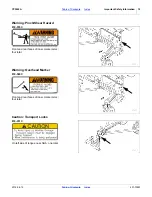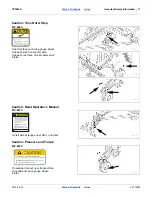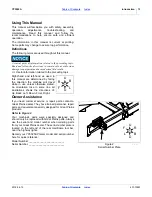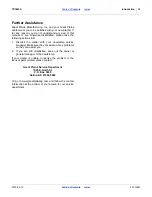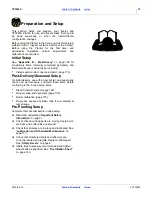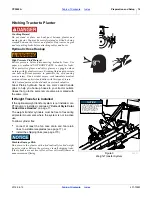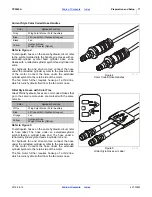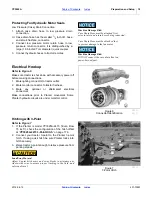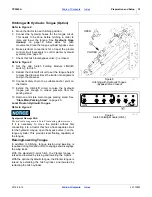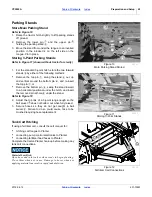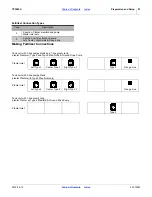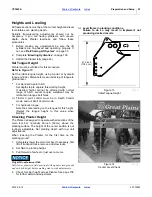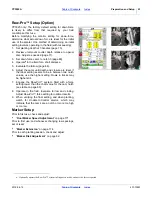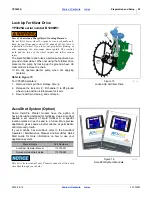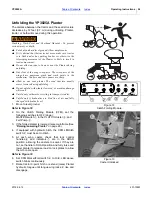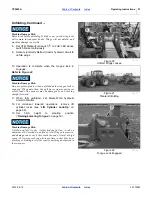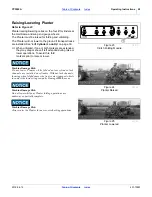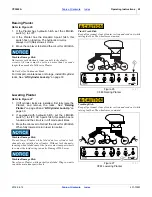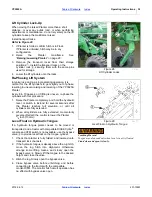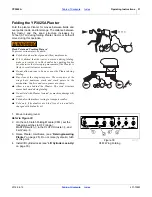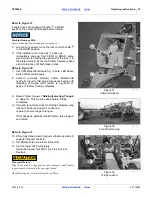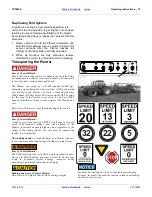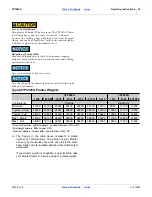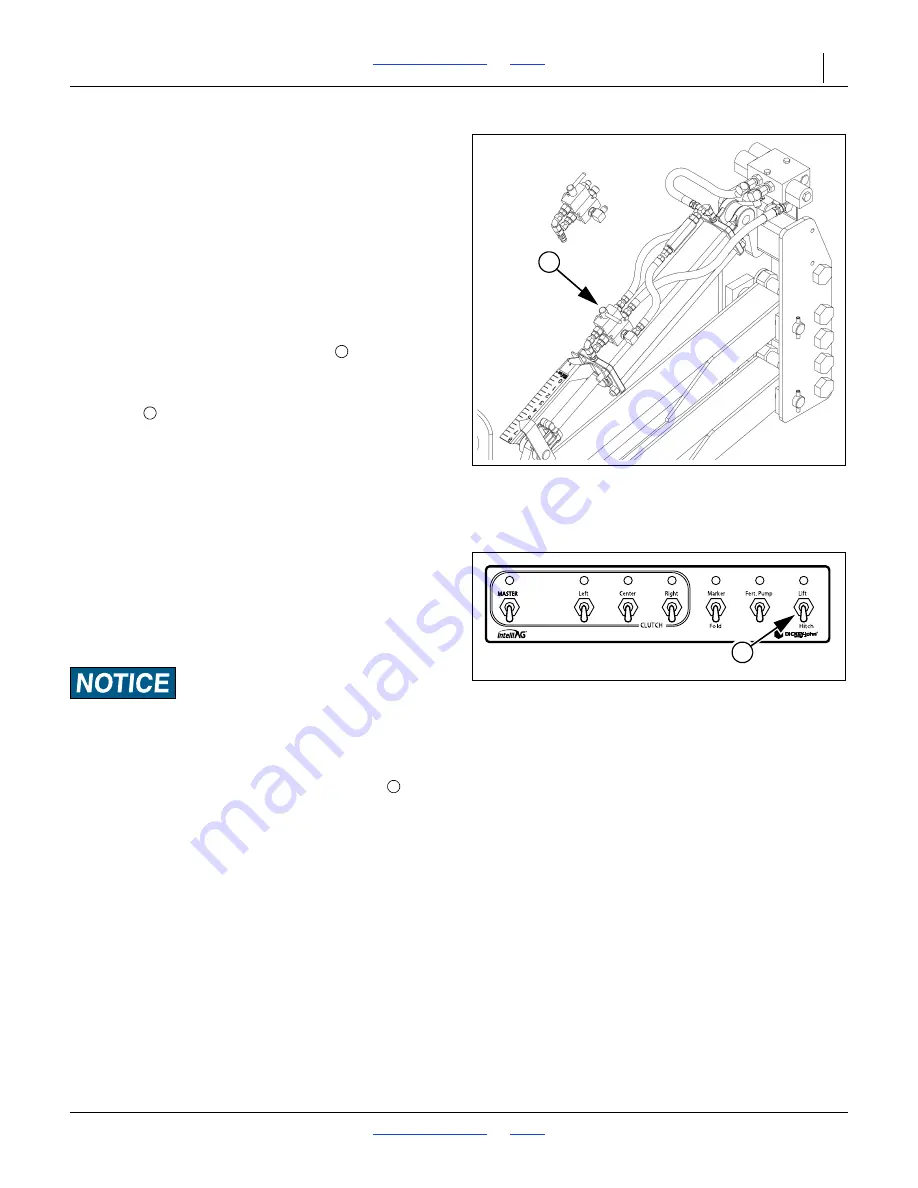
YP3025A
Preparation and Setup
19
2019-06-12
401-705M
Hitching with Hydraulic Tongue (Option)
4. Move the tractor to near hitching position.
5. Connect the hydraulic hoses for the tongue circuit.
This needs to be done before hitching in order to
raise and lower the tongue. See “
” on page 16. Allow slack for hitch
movements. Close the tongue cylinder bypass valve.
6. Make electrical connections for at least the planter
control circuit (necessary to control planter hydraulic
systems). See page 18.
7. Check that hitch local bypass valve
is closed.
8. Set the cab Clutch Folding Module Lift/Hitch
switch
to Hitch.
9. Retract the Hitch/Lift circuit to set the tongue height
to clear the draw-bar. Back the tractor into alignment
and pin the draw-bar.
10. Connect safety chain to a suitable anchor point on
the tractor.
11. Extend the Hitch/Lift circuit to raise the hydraulic
tongue just enough to relieve pressure from the
parking stand.
12. Remove and store main tongue parking stand. See
Local Float on Hydraulic Tongue
Equipment Damage Risk:
The hydraulic tongue must be in Float during planter moves.
If it is necessary to move the planter without first
connecting it to a tractor that has a float-capable circuit
for the hydraulic tongue, open the bypass valve
on the
tongue cylinder. This provides local floating capability at
the tongue.
Raising/Lowering Tongue
In addition to hitching, tongue raising and lowering is
required during fold and unfold to engage and disengage
the wing locks.
With the standard 3-point hitch, the Planter tongue is
raised and lowered by raising and lowering the 3-point.
With the optional hydraulic tongue, the Planter tongue is
raised by extending the hitch cylinder, and lowered by
retracting the hitch cylinder.
Figure 8
Hitching with Hydraulic Tongue
(Bypass Valve Closed)
28477
1
OPEN
CLOSED
2
Figure 9
Clutch Folding Module (Hitch)
26033


